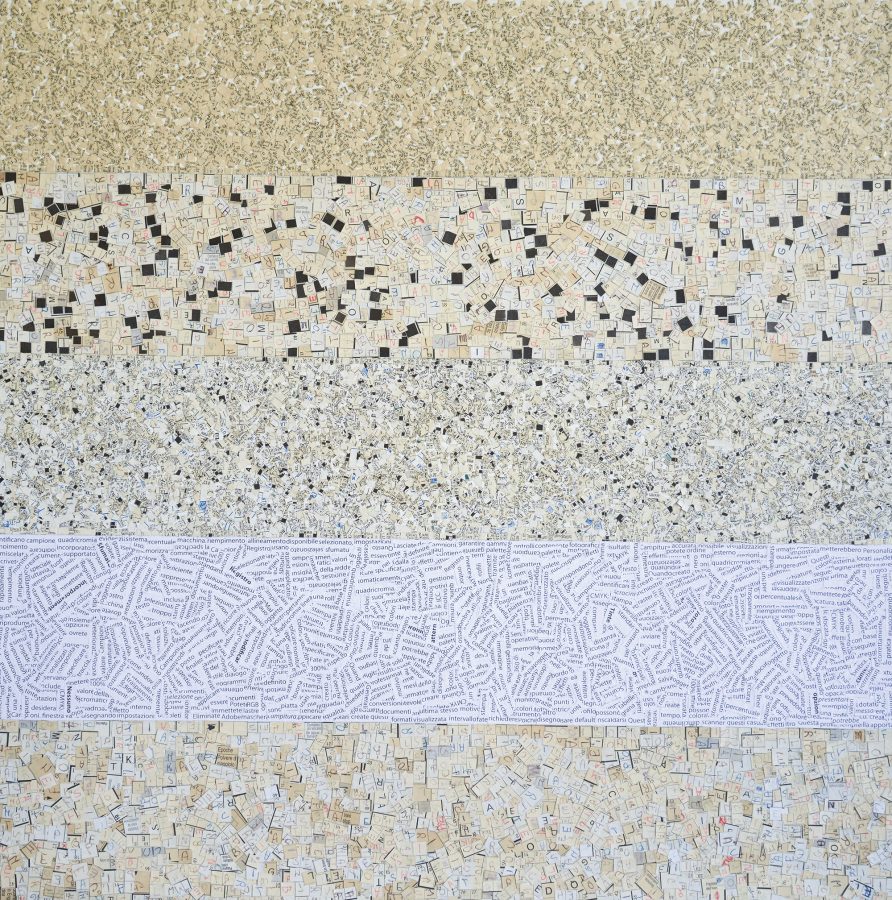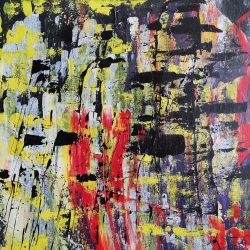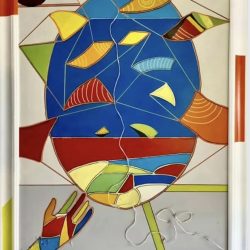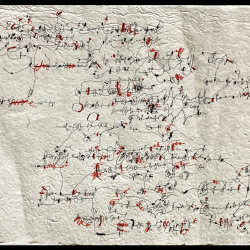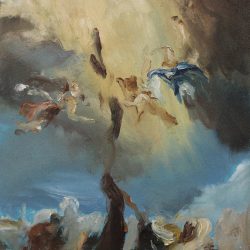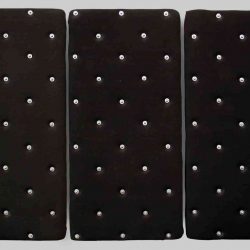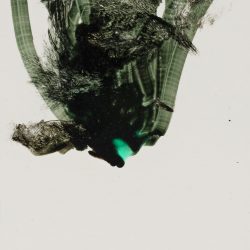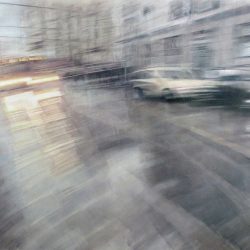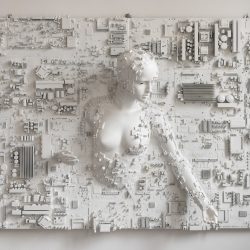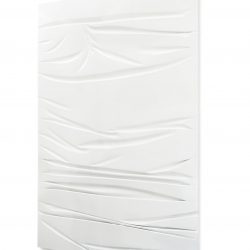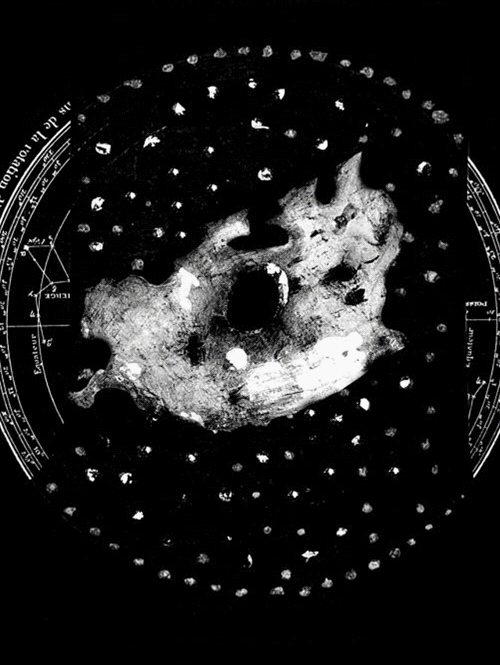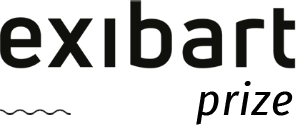work
Dividi et impera
| category | Painting |
| subject | Architecture, Abstract, Beauty |
| tags | arte contemporanea, collage art, arte concettuale, frammenti |
| base | 50 cm |
| height | 50 cm |
| depth | 3 cm |
| year | 2018 |
Dividi et impera
2018
50x50 cm
Collage and mixed media on canvas
The surface of the canvas unfolds in five horizontal bands, each composed of different fragments: small crossword squares, cut-out words, tiny pieces of puzzle magazines, black-and-white grids, and minuscule fragments of book pages. The result is a delicate, almost archaeological texture that recalls ancient pavements, a memory of cultural stratifications.
The title, Dividi et impera, refers to a strategy of power, echoing the famous Latin motto attributed to Roman emperors, who used it as a tool of political and military domination: divide in order to rule. Here it becomes a metaphor for language itself, an invitation to reflect on the power of the word. Words, fragmented and scattered across the bands, reveal how language can both unite and divide: it can create cohesion and meaning, or isolate, partition, and fracture. The verb is power, because it organizes thought, structures memory, and shapes collective perception. Multiplied and disseminated across the surface, words reveal their force of collective suggestion: they can enchant the masses, persuade, manipulate, and exercise an invisible control. Within this visual weave, what seems fragile and minute—syllables, letters, scraps—transforms into a symbolic architecture capable of influencing our vision of the world.
2018
50x50 cm
Collage and mixed media on canvas
The surface of the canvas unfolds in five horizontal bands, each composed of different fragments: small crossword squares, cut-out words, tiny pieces of puzzle magazines, black-and-white grids, and minuscule fragments of book pages. The result is a delicate, almost archaeological texture that recalls ancient pavements, a memory of cultural stratifications.
The title, Dividi et impera, refers to a strategy of power, echoing the famous Latin motto attributed to Roman emperors, who used it as a tool of political and military domination: divide in order to rule. Here it becomes a metaphor for language itself, an invitation to reflect on the power of the word. Words, fragmented and scattered across the bands, reveal how language can both unite and divide: it can create cohesion and meaning, or isolate, partition, and fracture. The verb is power, because it organizes thought, structures memory, and shapes collective perception. Multiplied and disseminated across the surface, words reveal their force of collective suggestion: they can enchant the masses, persuade, manipulate, and exercise an invisible control. Within this visual weave, what seems fragile and minute—syllables, letters, scraps—transforms into a symbolic architecture capable of influencing our vision of the world.



